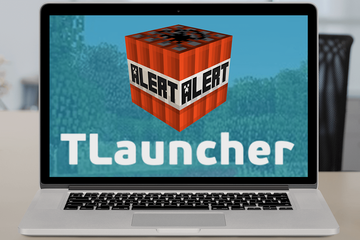TLauncher, a popular tool to run Minecraft with no strings attached, has been rumored to contain spyware for years; but let’s see if there’s a reason to worry.
What is the TLauncher virus story all about?
When it comes to hugely popular computer games like Minecraft, some people prefer cutting corners rather than going with the flow. It’s certainly tempting to enjoy a full-fledged playing experience without having to pay. This demand spawns workarounds through apps like TLauncher. It’s a long-standing cracked launcher for Minecraft that allows users to access the sandbox game without having to register an official account. I personally don’t endorse schemes like that because intellectual property is too valuable of an asset these days. But let’s face it, such tools have existed for just about as long as the games they are designed to crack, and they aren’t going anywhere anytime soon. However, aside from the ethical facet of the matter, one major flip side of using these services is that you leave your security and privacy to chance. Unsurprisingly, claims like “TLauncher has virus” have long been the talk of the gaming town, and that might be for a reason.
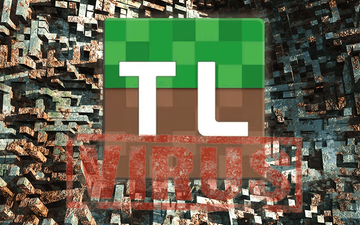
Let’s try to figure out the source of these concerns. Most strains of malware are created with stealth in mind, so people normally don’t notice red flags such as data theft happening behind the scenes. The whole virus infection story around TLauncher doesn’t appear to stem from users’ super-vigilance. Instead, a number of well-known anti-malware suites started detecting certain components of TLauncher as spyware several years back. These reports would state that the embedded harmful code could access and collect sensitive data on a victim’s device. The information at risk potentially includes internet activities such as browsing history and credentials for signing in to websites. Some virus spin-offs were supposedly capable of turning on cameras and microphones without the victim’s consent and awareness.
TLauncher virus may re-infect your Mac multiple times unless you delete all of its fragments, including hidden ones. Therefore, it is recommended to download Combo Cleaner and scan your system for these stubborn files. This way, you may reduce the cleanup time from hours to minutes.
Download Now Learn how Combo Cleaner works. If the utility spots malicious code, you will need to buy a license to get rid of it.At this point, let’s make something clear. Alerts from AV solutions are hardly ever far-fetched in terms of the threats they report. The detection logic usually involves signature-based, behavioral, or heuristic analysis – in fact, it’s most likely a combination of all the above. Of course, false positives are possible, but it doesn’t seem to be the case here. A plausible theory is that some people may engage with compromised versions of TLauncher. Cybercriminals follow the trends, and therefore they focus on breaching software used by lots of people to maximize their reach. It’s within the realms of possibility that malicious actors have been distributing modified and virus-riddled variants of the application through lesser-known software marketplaces.
If this scenario kicks in, bad actors will not only get a one-time chance to deposit a specific piece of malware. Researchers say the booby-trapped edition can be in a constant state of exchanging data with malicious Command and Control (C2) servers. This means that once the connection is established, more malware may crop up on the computer behind the scenes. Yet another common drag caused by a modified build of TLauncher is an influx of ads in the browser, which signals malefactors’ attempts to monetize their shady activities more efficiently.
To wrap up, you are unlikely to run into security issues with the authentic version of TLauncher available to download on the solution’s official website and other reputable app repositories. Everything can turn on their head, though, if the installer is a rogue one. By the way, these copycats are often promoted through online advertisements on web pages with questionable reputation. In case you suspect infection based on warnings from security software or a significant deterioration of your Mac’s performance, it’s recommended to uninstall the application along with all of its modules, including a Java component, and files it may use for persistence such as Launch Daemons and Launch Agents. Peruse and follow the steps below to make sure the removal is thorough enough.
TLauncher virus manual removal for Mac
The steps listed below will walk you through the removal of this malicious application. Be sure to follow the instructions in the specified order.
Expand the Go menu in your Mac’s Finder bar and select Utilities as shown below.
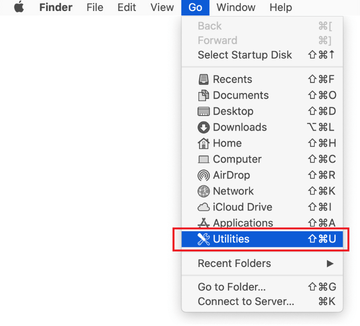
Locate the Activity Monitor icon on the Utilities screen and double-click on it.
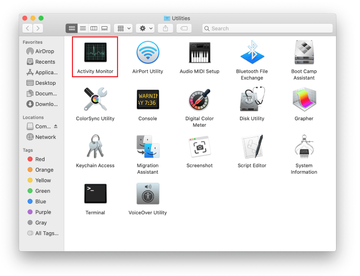
In the Activity Monitor app, look for TLauncher or another process that appears suspicious. To narrow down your search, focus on unfamiliar resource-intensive entries on the list. Keep in mind that its name isn’t necessarily related to the way the threat is manifesting itself, so you’ll need to trust your own judgement. If you pinpoint the culprit, select it and click on the Stop icon in the upper left-hand corner of the screen.
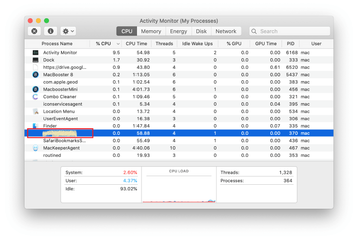
When a follow-up dialog pops up asking if you are sure you want to quit the troublemaking process, select the Force Quit option.
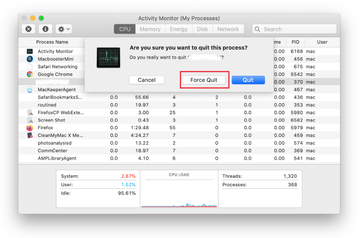
Click on the Go menu icon in the Finder again and select Go to Folder. You can as well use the Command-Shift-G keyboard shortcut.

Type /Library/LaunchAgents in the folder search dialog and click on the Go button.
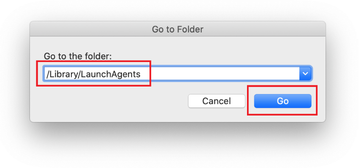
Examine the contents of the LaunchAgents folder for dubious-looking items. Be advised that the names of files spawned by malware may give no clear clues that they are malicious, so you should look for recently added entities that appear to deviate from the norm.
As an illustration, here are several examples of LaunchAgents related to mainstream Mac infections: com.pcv.hlpramc.plist, com.updater.mcy.plist, com.avickUpd.plist, and com.msp.agent.plist. If you spot files that don’t belong on the list, go ahead and drag them to the Trash.
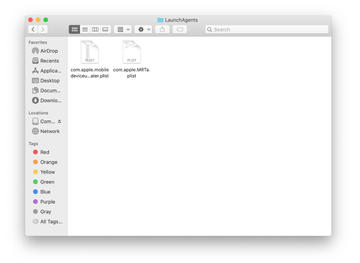
Use the Go to Folder lookup feature again to navigate to the folder named ~/Library/Application Support (note the tilde symbol prepended to the path).
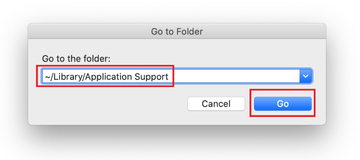
When the Application Support directory is opened, identify recently generated suspicious folders in it and send them to the Trash. A quick tip is to look for items whose names have nothing to do with Apple products or apps you knowingly installed. A few examples of known-malicious folder names are com.AuraSearchDaemon, ProgressSite, and IdeaShared.
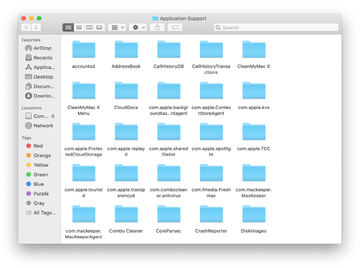
Enter ~/Library/LaunchAgents string (don’t forget to include the tilde character) in the Go to Folder search area.
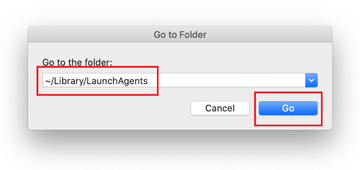
The system will display LaunchAgents residing in the current user’s Home directory. Look for dodgy items related to the TLauncher virus (see logic highlighted in subsections above) and drag the suspects to the Trash.
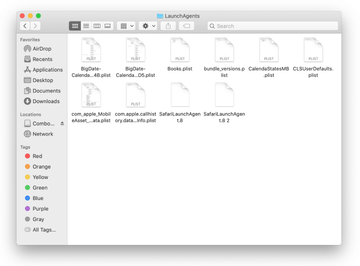
Type /Library/LaunchDaemons in the Go to Folder search field.
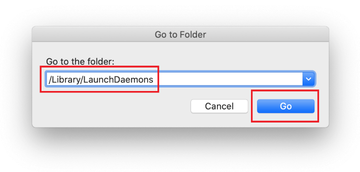
In the LaunchDaemons path, try to pinpoint the files the malware is using for persistence. Several examples of such items cropped by Mac infections are com.ConnectionCache.system.plist and com.mulkeyd.plist. Delete the sketchy files immediately.
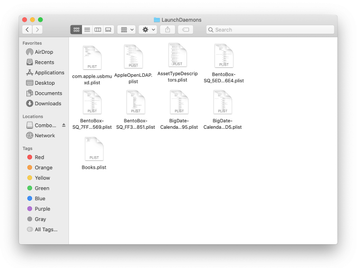
Click on the Go menu icon in your Mac’s Finder and select Applications on the list.

Find the entry for an app that clearly doesn’t belong there and move it to the Trash. If this action requires your admin password for confirmation, go ahead and enter it.
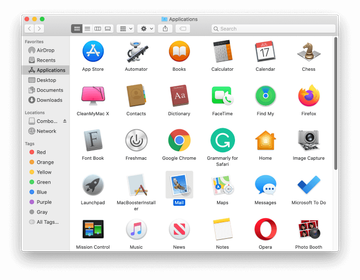
Expand the Apple menu and select System Preferences.
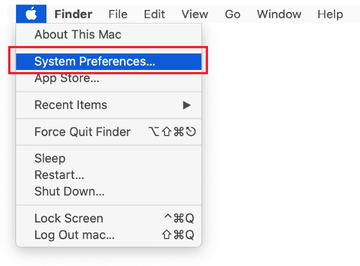
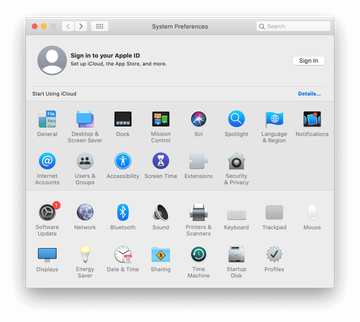
Proceed to Users & Groups and click on the Login Items tab.
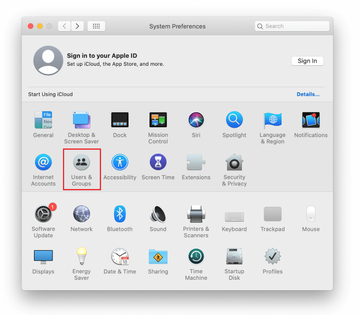
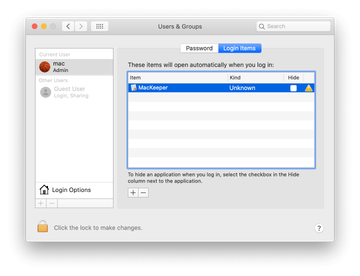
Now select Profiles under System Preferences. Look for a malicious item in the left-hand sidebar. Several examples of configuration profiles created by Mac adware include Chrome Settings, AdminPrefs, MainSearchPlatform, and Safari Preferences. Select the offending entity and click on the minus sign at the bottom to eliminate it.
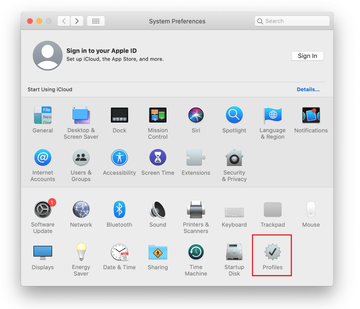
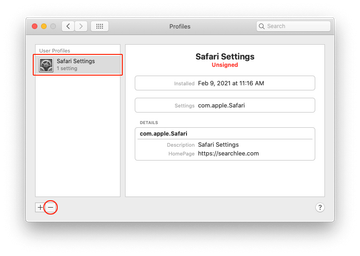
Get rid of TLauncher virus in web browser on Mac
To begin with, the web browser settings taken over by the TLauncher virus should be restored to their default values. Although this will clear most of your customizations, web surfing history, and all temporary data stored by websites, the malicious interference should be terminated likewise. The overview of the steps for completing this procedure is as follows:
- Remove TLauncher virus from Safari
Open the browser and go to Safari menu. Select Preferences in the drop-down list.
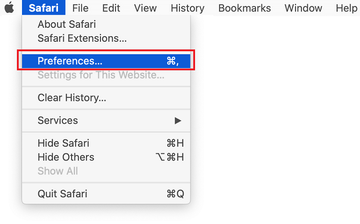
Once the Preferences screen appears, click on the Advanced tab and enable the option saying “Show Develop menu in menu bar”.
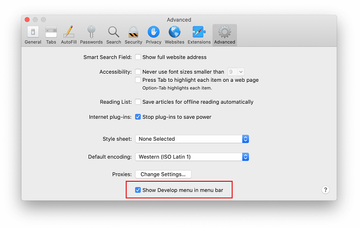
Now that the Develop entry has been added to the Safari menu, expand it and click on Empty Caches.
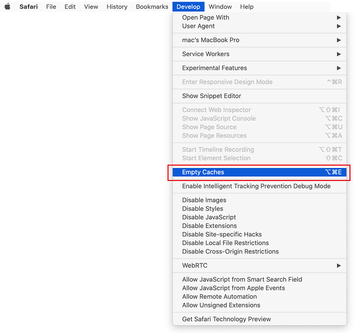
Now select History in the Safari menu and click on Clear History in the drop-down list.
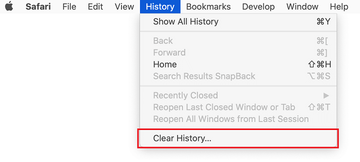
Safari will display a dialog asking you to specify the period of time this action will apply to. Select all history to ensure a maximum effect. Click on the Clear History button to confirm and exit.

Go back to the Safari Preferences and hit the Privacy tab at the top. Find the option that says Manage Website Data and click on it.

The browser will display a follow-up screen listing the websites that have stored data about your Internet activities. This dialog additionally includes a brief description of what the removal does: you may be logged out of some services and encounter other changes of website behavior after the procedure. If you’re okay with that, go ahead and click on the Remove All button.
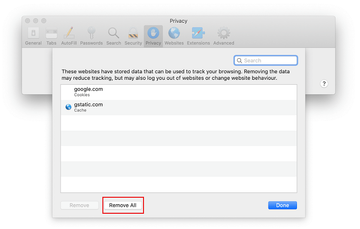
Restart Safari
- Remove TLauncher in Google Chrome
Open Chrome, click the Customize and control Google Chrome (⁝) icon in the top right-hand part of the window, and select Settings in the drop-down
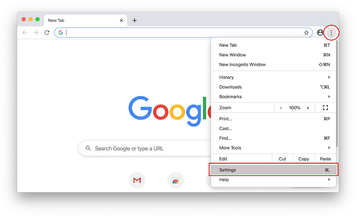
When on the Settings pane, select Advanced
Scroll down to the Reset settings section.
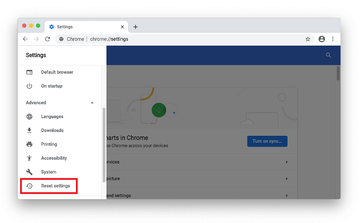
Confirm the Chrome reset on a dialog that will pop up. When the procedure is completed, relaunch the browser and check it for malware activity.
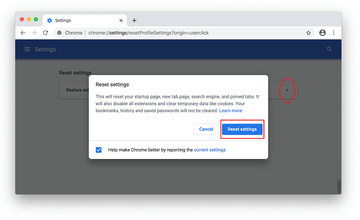
- Remove TLauncher from Mozilla Firefox
Open Firefox and go to Help – Troubleshooting Information (or type about:support in the URL bar and press Enter).
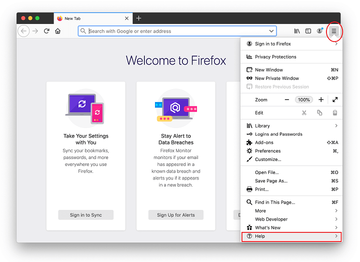

When on the Troubleshooting Information screen, click on the Refresh Firefox button.
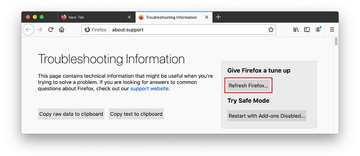
Confirm the intended changes and restart Firefox.
Get rid of TLauncher virus using Combo Cleaner removal tool
The Mac maintenance and security app called Combo Cleaner is a one-stop tool to detect and remove TLauncher virus. This technique has substantial benefits over manual cleanup, because the utility gets hourly virus definition updates and can accurately spot even the newest Mac infections.
Furthermore, the automatic solution will find the core files of the malware deep down the system structure, which might otherwise be a challenge to locate. Here’s a walkthrough to sort out the TLauncher issue using Combo Cleaner:
Download Combo Cleaner installer. When done, double-click the combocleaner.dmg file and follow the prompts to install the tool onto your Mac.
By downloading any applications recommended on this website you agree to our Terms and Conditions and Privacy Policy. The free scanner checks whether your Mac is infected. To get rid of malware, you need to purchase the Premium version of Combo Cleaner.
Open the app from your Launchpad and let it run an update of the malware signature database to make sure it can identify the latest threats.
Click the Start Combo Scan button to check your Mac for malicious activity as well as performance issues.
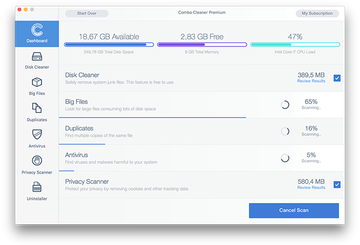
Examine the scan results. If the report says “No Threats”, then you are on the right track with the manual cleaning and can safely proceed to tidy up the web browser that may continue to act up due to the after-effects of the malware attack (see instructions above).
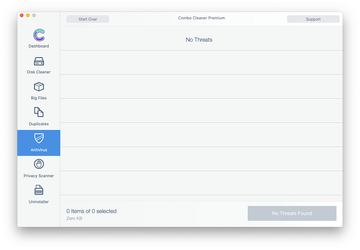
In case Combo Cleaner has detected malicious code, click the Remove Selected Items button and have the utility remove TLauncher threat along with any other viruses, PUPs (potentially unwanted programs), or junk files that don’t belong on your Mac.
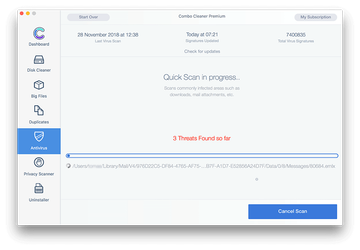
Once you have made doubly sure that the malicious app is uninstalled, the browser-level troubleshooting might still be on your to-do list. If your preferred browser is affected, resort to the previous section of this tutorial to revert to hassle-free web surfing.
